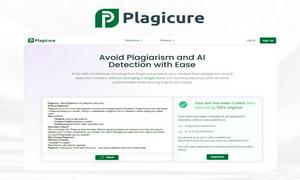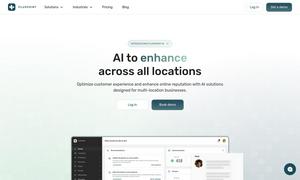
Discover the Best AI Tools to Boost Your Productivity
Find the Best AI Tools to Optimize Your Work and Personal Tasks
Best SaaS AI Tools in 2024




What is SaaS
The SaaS Category encompasses software solutions delivered online, enabling efficient access and collaboration without extensive installation. Its main purpose revolves around scalability, affordability, and ease of use, benefiting businesses by reducing operational costs and streamlining workflows while ensuring seamless updates and maintenance.
How SaaS works
The SaaS Category operates by delivering software applications through the cloud, removing the need for local installation. Users can access the software via an internet connection, enabling collaborative features and automatic updates. It involves signing up for a subscription model, offering tiered access based on user needs. Organizations can easily scale their usage up or down, integrate with existing systems, and benefit from secure data storage and management, making it a practical choice for various applications.
What are the advantages of SaaS?
The advantages of the SaaS Category include significant cost savings and increased flexibility for users. It eliminates upfront infrastructure costs associated with traditional software and provides a subscription-based model that aligns expenses with usage. Enhanced collaboration features, regular updates, and scalability ensure that businesses can quickly adapt to changing needs while enjoying access to the latest technology without interruption, maximizing both efficiency and innovation.
Key Features for SaaS
Cloud Accessibility
Cloud Accessibility is a dynamic key feature of the SaaS Category, allowing users to access software applications from any device with an internet connection. This convenience enhances collaboration, promotes remote work, and ensures that teams can operate effectively regardless of location, making it an invaluable aspect of modern business operations.
Automated Updates
Automated Updates is another standout feature of the SaaS Category, which ensures users always have access to the latest software enhancements and security patches. This functionality reduces the burden of manual updates and maintenance, allowing businesses to focus on their core activities while enjoying improved performance and security seamlessly incorporated into their applications.
Scalability
Scalability is a crucial feature of the SaaS Category, enabling businesses to adjust their software resources in real time. This flexibility allows companies to easily expand or reduce access based on changing demands, ensuring they only pay for what they need, facilitating growth without the burden of excessive costs or infrastructure challenges.
Use Cases for SaaS?
The SaaS Category is beneficial in numerous use cases such as project management, customer relationship management (CRM), and human resource management. Companies can leverage these solutions to improve collaboration across teams, streamline processes, and enhance communication. By utilizing SaaS solutions, organizations can quickly implement tools that align with their specific workflow needs, thereby improving productivity and enabling faster decision-making while reducing administrative overhead.
FAQs for SaaS
What benefits does the SaaS Category provide for businesses?
The SaaS Category provides numerous benefits for businesses, including cost reduction, increased flexibility, and ease of use. By accessing software over the internet, companies can avoid hefty installation costs and benefit from scalable solutions that adapt to their requirements. This model fosters collaboration and innovation, enhancing overall productivity.
How does cloud accessibility enhance the SaaS Category?
Cloud accessibility is a key feature that enhances the SaaS Category by allowing users to access applications from anywhere at any time. This flexibility facilitates remote work and strengthens team collaboration, making it easier for businesses to operate efficiently in various environments, thereby driving productivity and responsiveness.
What specific applications benefit from the SaaS Category?
The SaaS Category specifically benefits applications like project management tools, CRMs, and accounting software. By utilizing these solutions, organizations can streamline operations, improve data collaboration, and enhance customer interactions, all while enjoying the flexibility and simplicity of cloud-based services to meet their unique requirements.
What makes the SaaS Category a competitive advantage for organizations?
The SaaS Category represents a competitive advantage for organizations due to its unique features such as automated updates and scalability. These elements ensure that businesses can stay current with minimal effort, adjust resources swiftly, and respond to market changes effectively, allowing them to maintain a technological edge in their respective industries.
How does the SaaS Category address specific business needs?
The SaaS Category addresses specific business needs by offering targeted solutions that enhance communication, collaboration, and efficiency. Its subscription-based model allows companies to implement tailored applications without significant upfront investments, ensuring businesses can adapt quickly to evolving demands and continue to grow sustainably.
How do users benefit from unique features within the SaaS Category?
Users benefit from unique features within the SaaS Category, such as automated updates and robust security protocols, ensuring that their software environment remains secure and efficient. These features enhance user experience, provide peace of mind concerning data safety, and contribute significantly to streamlined operations and improved productivity in business workflows.



















